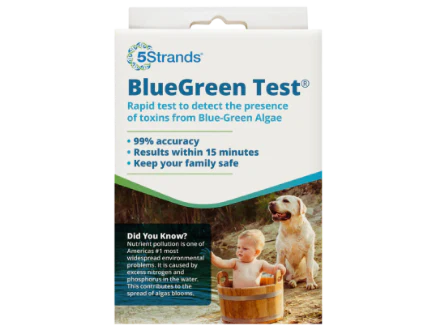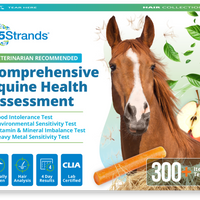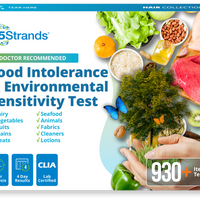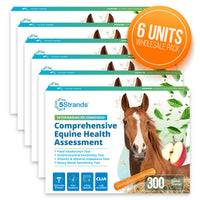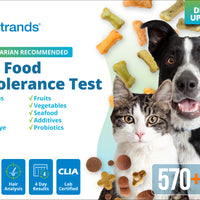Are you someone who struggles with a sensitive stomach, occasional gassiness, and diarrhea? Perhaps you notice joint pain, fatigue, and headaches after eating that creamy pasta and garlic bread? Think you’re gluten intolerant? If you do, don’t panic. About 6% of people in the U.S. are believed to have gluten sensitivity. While experiencing gluten intolerance symptoms can be challenging for many and debilitating for some, understanding gluten intolerance and how certain foods affect your body is the first step on your journey to recovery.
In this article, I explain what gluten intolerance is, explore some of its root causes and research findings, and provide additional tips and context so you can learn to thrive with this condition.
What is gluten intolerance?
Gluten intolerance or non-celiac gluten sensitivity (NCGS) is “a condition in which intestinal and extra-intestinal symptoms occur after gluten/wheat ingestion in subjects where the diagnosis of both celiac disease (CD) or IgE-mediated wheat allergy (WA) has been excluded.” I learned that in people with this condition, it’s their immune system that attacks the gluten.
My understanding is that Non-celiac gluten intolerance symptoms can vary widely. Some people with this condition may experience fatigue, bloating, gas, abdominal pain, diarrhea, and constipation. An estimate of 30-40% of the U.S. population may suffer from gluten intolerance (non-celiac gluten intolerance).
In this context, you may be asking yourself, “But what the heck is gluten?” Well, gluten is a protein mainly found in grains and seeds, such as wheat, rye, and barley. You may also be surprised, as I was, that gluten can also be present in vitamins, supplements, and certain medications. Although not all of us can digest gluten products, they’re everywhere because they’re part of the mainstream human diet.
What are some common myths about gluten intolerance?
I believe that staying well-informed about gluten intolerance is vital to your health, especially since there are many misconceptions and myths about this condition. While well-intended, sometimes family and friends may give you incorrect or incomplete information that may lead to uninformed decisions about your health. Here are some of the myths I found to be most common:
-
Gluten Intolerance Myth #1: Gluten intolerance is the same as celiac disease and wheat allergy.
These three conditions involve intolerance to wheat proteins, but are different from one another. Celiac disease is an autoimmune disorder that causes damage to the small intestine when you ingest gluten-containing products and it’s the most severe form of gluten intolerance. Wheat allergy is a life-threatening food allergy involving an immune reaction to the proteins in gluten.
-
Gluten Intolerance Myth #2: Gluten-free diets are a healthier option for everyone.
I came across the work of Dr. Gwee Kok Ann, gastroenterologist at Glenagles Hospital, who says that if you haven’t shown any symptoms of gluten intolerance, have no family history of gluten sensitivity, and don’t have an official medical diagnosis, eliminating gluten-based foods from your diet completely may not be a good choice. Besides, there is no evidence that gluten-free products are any healthier for everyone, especially if they are highly processed and high in sugar, unhealthy oils, and empty carbs.
-
Gluten Intolerance Myth #3: If I don’t have celiac disease, I don’t need to avoid gluten.
Well, even if you test negative for celiac disease, you may still experience symptoms such as fatigue, abdominal pain, bloating, brain fog, and joint pain that may be attributed to some type of gluten intolerance. In some cases, you may need to test for any gluten intolerance.
-
Gluten Intolerance Myth #4: I should start my children on a gluten-free diet
As a parent of a small child, I think this can be a dangerous one. Some parents think that because some children can develop symptoms of gluten sensitivity, they should start their children on a gluten-free diet early on. I agree with Dr. Gwee Kok Ann when he says that restricting your children’s diet may lead to nutritional and caloric deficiencies, and other health issues that could impact their growth and development. Dr Ann believes that unless your child exhibits signs of a reaction to gluten, it is best to consult with a pediatrician who is an expert and understands gluten sensitivity.
-
Gluten Intolerance Myth #5: If I’m gluten intolerant, symptoms will show up immediately.
From my own research, this is not necessarily the case. If you suspect you have a gluten intolerance, it may be challenging to properly identify the effects on your health without carefully tracking your eating habits. Many gluten sensitivity reactions are delayed, and symptoms such as fatigue, abdominal pain, and mood shifts may not appear until hours or days after eating gluten-containing foods. One way to help you is to write a food journal and track any signs you may experience after eating food with gluten.
Understanding how grains are cultivated

I believe that understanding how grains are cultivated may provide an additional piece of information that can broaden your perspective on the gluten intolerance issue. Grains such as wheat, barley, and rye, the main sources of gluten, have been cultivated by humans for thousands of years. Grain is “the harvested seed of grasses such as wheat, oats, rice, and corn.”
The cultivation of commercial and private grain is a complex task involving more than just planting and waiting for the harvest. It is a year-round process that starts and ends with crop planning. To make it more digestible, here are some of the grain cultivation steps farmers take in the United States:
-
Deciding which type of grain the farmer wants to grow.
These may include: wheat, oats, rice, corn, barley, rye, sorghum, and millet. Choosing the types of grains a farmer will be harvesting determines the next step they’ll be taking.
-
Choosing and planting their seeds
By using the United States Department of Agriculture (USDA) Plant Hardiness Zone Map, farmers can choose the type of grain they want to grow, depending on what will thrive in their location, looking for seeds from a supplier who has tested them for diseases, weeds, and germination. Farmers ensure they choose the right spot for planting their seeds, test and till the soil, spread and rake the seeds, and add a layer of straw and water the area.
-
Harvesting the crops
After several months, and once the grain has dried to a minimum of 20% moisture, the grain is ready for harvest. Other steps in this process include: threshing the grain from its casing or chaff by rubbing it by hand or with a threshing machine, and winnowing the grain (separating the edible grain from the inedible chaff). Eventually, the grains are dried and milled into flour or processed for use in breads, pastas, cereals, and packaged foods.
-
Storing the grain
Storing the grain properly in the right grain bins is essential to avoid ruining it. The grain should also reach an approximate 15% moisture level for proper storage. Having adequate airflow and cool storage temperature can also help keep the grains successfully in storage.
I was surprised to discover how grain cultivation has changed and the gluten we consume presently is different from what our ancestors had. Our digestive systems have spent about 10,000 years adapting to digesting conventional wheat grains and breads, but since the establishment of modern grains and bread processing techniques, our bodies have not been able to fully take in as much gluten. Progressively, there has been an increase in the frequency of gluten sensitivities among the general public, with an approximate fivefold rise in gluten sensitivity cases reported in the past five decades.
Can someone with a gluten intolerance develop an intolerance to other foods?

Yes, some people can, and I wasn’t surprised when I saw that approximately 35% of patients with non-celiac gluten sensitivity (NCGS) suffer from other food intolerances, with lactose intolerance being the most frequently co-occurring intolerance. This occurs as a result of a complex interaction between the immune system, intestinal barrier function, and irritating compounds found in foods with gluten.
I came across some research reporting that gluten (or other wheat components) can trigger an innate immune response in those with non-celiac gluten sensitivity, leading to ongoing gut inflammation that makes them more susceptible to reacting to food products that could otherwise be tolerated. An imbalance in the gut bacteria (dysbiosis) can also lead to increased intestinal permeability, further predisposing individuals to multiple food intolerances. The next case highlights something that is frequently reported by many people who develop other food intolerances in addition to having gluten sensitivity.
“I began consuming a lot of apples as snacks once I learned that I was gluten intolerant and developed an allergy to them as well…I read that when you consume too much of one food that your body can develop an intolerance to it, especially once you react to gluten…”
Dr. Vikki Petersen, a Certified Functional Medicine practitioner and founder of Root Cause Medical Clinic, says the problem may be in the immune system’s bloodstream coming into contact with partially digested food. She explains that over time, gluten creates a leaky gut due to the deterioration and inflammation it causes to the lining of the small intestine. This is due to the immune system’s reaction, making the small intestine more porous to substances that a healthy small intestine would keep within its lining. This results in partially digested gluten and other foods leaking through the porous intestine and coming into the bloodstream.
I also found literature reporting that some irritating compounds in gluten-containing foods can be a factor causing food intolerance in some with non-celiac gluten sensitivity, especially those present in FODMAPS types (fermentable, oligosaccharides (fructans and galactans), disaccharides (lactose), monosaccharides (fructose), and polyols (sugar alcohols)).
If you suffer from gluten intolerance and suspect you have an intolerance to certain foods, it is important to get tested. Food intolerances may cause inflammation, impacting your ability to absorb specific nutrients. A 5Strands food intolerance test can help you determine which specific food items you may be intolerant to and guide you to make choices that can improve your health.
The gluten-free food industry and its health promises

Have you looked for gluten-free alternatives to relieve some of your symptoms? You may not be surprised to read that the consumption of gluten-free foods has dramatically increased over the past three decades. In 2024, the U.S. gluten-free product market was valued at US$5.9 billion. The gluten-free food industry provides alternatives for people with gluten sensitivities, but it also presents some potential problems. While it can, in many cases, improve the quality of life for those with these conditions, many gluten-free products can lead to nutrient deficiencies and are also more expensive.
Gluten-free products – defined in the US as “those that contain less than or equal to 20 parts per million of gluten,” significantly lack wheat, rye, barley, and sometimes oats, all rich sources of arabinoxylan, an essential non-starch polysaccharide. Arabinoxylan is known for promoting beneficial gut bacteria, enhancing digestion, regulating blood sugar levels, and supporting a balanced gut microbiome.
There is no doubt that a gluten-free diet is medically necessary for people suffering from gluten intolerance, but many people adopt a gluten-free diet because of its perceived health benefits or because it has become a trend. I found that multiple studies have identified some problems associated with gluten-free products, including the following:
- Difficulties finding gluten-free products that excel in all nutritional areas (high protein and fiber content, and low in calories, carbs, and sugar)
- Following a long-term gluten-free diet has been associated with higher body mass index (BMI) and nutritional deficiencies
- Gluten-free foods may not offer additional health and financial benefits for people without a gluten intolerance
In light of these findings, if you suffer from gluten intolerance symptoms, you should consult with your healthcare provider.
As a final point
Gluten intolerance is a serious health challenge that affects many people. It impacts far more than the digestive system and can lead to other complications. If you’ve suffered for some time with gluten intolerance symptoms and have developed intolerance to other foods, I’d encourage you to get a diagnosis and proper medical help. Remember, you’re not alone. While dealing with gluten intolerance can be uncomfortable and stressful for many people, I also found that there is plenty of good support out there. With a solid understanding of this condition and good professional intervention, you can help reduce symptoms, increase your energy, and improve your quality of life.



